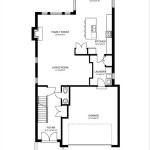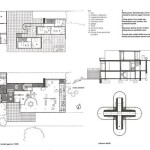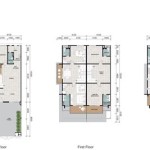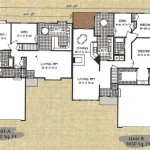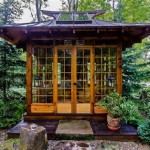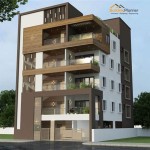House Plans With Great Back Porches
A well-designed back porch can significantly enhance a home's living space, providing an area for relaxation, entertainment, and connection with the outdoors. When considering house plans, prioritizing the back porch design can lead to a more enjoyable and functional home. This article explores various aspects of incorporating a great back porch into house plans.
One of the first considerations when designing a back porch is its size and placement. The porch's dimensions should complement the house's overall scale and accommodate intended uses. A small porch might suit a quiet reading nook, while a larger porch can accommodate dining and entertaining. Placement relative to the house and surrounding landscape is equally crucial. A south-facing porch might capture excessive sun, while a west-facing orientation could offer desirable sunset views. Careful consideration of these factors during the planning stage ensures the porch integrates seamlessly with the home and its surroundings.
The architectural style of the porch should harmonize with the house's overall architectural design. A rustic farmhouse might feature a wraparound porch with simple columns, while a modern home could incorporate a sleek, minimalist porch with cable railings. Matching materials and design elements creates a cohesive and aesthetically pleasing look. Utilizing similar roofing materials, siding, and trim details can tie the porch seamlessly to the main house structure.
Functionality plays a critical role in back porch design. Defining the porch's primary purpose—whether for dining, lounging, or entertaining—will guide design choices. A dining-focused porch might benefit from built-in seating and a nearby outdoor kitchen. A lounging porch could feature comfortable furniture and a ceiling fan for a relaxing atmosphere. Considering how the porch will be used helps ensure its design meets the homeowner's specific needs.
Material selection significantly impacts the porch's durability, maintenance requirements, and aesthetic appeal. Pressure-treated wood offers a classic look but requires regular staining or painting. Composite materials offer low maintenance but can be more expensive. Other options, like natural stone or concrete, provide durability and design versatility. Choosing appropriate materials for the climate and intended use ensures the porch remains functional and attractive for years to come.
Integrating amenities can elevate the porch's functionality and enjoyment. Outdoor kitchens, fireplaces, or fire pits can extend the porch's usability into cooler evenings. Ceiling fans provide comfort during warmer months, while built-in lighting allows for evening use. Strategically placed electrical outlets offer convenience for powering devices or lighting. Thoughtfully incorporating such amenities enhances the porch's overall utility and comfort.
Screening or enclosing the porch can extend its usability and provide protection from insects and weather. Screens allow for airflow while keeping insects out, while full enclosures with windows can create a three-season room. Adding a ceiling fan to an enclosed porch can further improve air circulation and comfort. These options offer flexibility and expand the porch's functionality throughout the year.
Accessibility is an important consideration in porch design. Incorporating ramps, wide doorways, and level surfaces ensures the porch is accessible to everyone, including individuals with mobility challenges. Thoughtful design can create a welcoming and inclusive space for all to enjoy. Properly planned accessibility features enhance the porch's usability and contribute to a more inclusive living environment.
Privacy considerations should influence the porch's design and placement. Positioning the porch away from neighboring properties or incorporating privacy screens or landscaping can enhance seclusion. Strategically placed trees or shrubs can offer natural screening while enhancing the porch's aesthetic appeal. Addressing privacy concerns during the planning stage ensures a more enjoyable and private outdoor space.
Proper lighting is essential for safety and ambiance. Well-placed lighting fixtures can illuminate steps, pathways, and seating areas, while accent lighting can highlight architectural features or landscaping. Using a combination of ambient, task, and accent lighting creates a layered and inviting atmosphere for evening enjoyment. Careful consideration of lighting needs enhances both safety and aesthetics.
Finally, landscaping around the porch can significantly enhance its appeal and functionality. Planting trees for shade, incorporating flower beds for color, and adding potted plants can create a welcoming and attractive outdoor space. Landscaping can also define the porch area and create a sense of enclosure. Integrating the porch with the surrounding landscape enhances its overall aesthetic appeal and creates a seamless transition between indoor and outdoor living.

Plan 46041hc Hill Country Home With Massive Porch Homes Ranch Style House Plans

Your Guide To House Plans With Screened In Porches Houseplans Blog Com

Beautiful Small Country House Plans With Porches Houseplans Blog Com

Southern Living Dreamy House Plans With Front Porches Blog Dreamhomesource Com

Minimalist Floor Plans With Porches Houseplans Blog Com

Back Porch Design Ideas

Mountain Ranch Home Plan With Screened Porch And Deck In Back 68585vr Architectural Designs House Plans

Southern Living Dreamy House Plans With Front Porches Blog Dreamhomesource Com

Country Style House Plan With Wrap Around Porch Farmhouse Plans New

Southern Home Plans Featuring Front Rear Covered Porches

